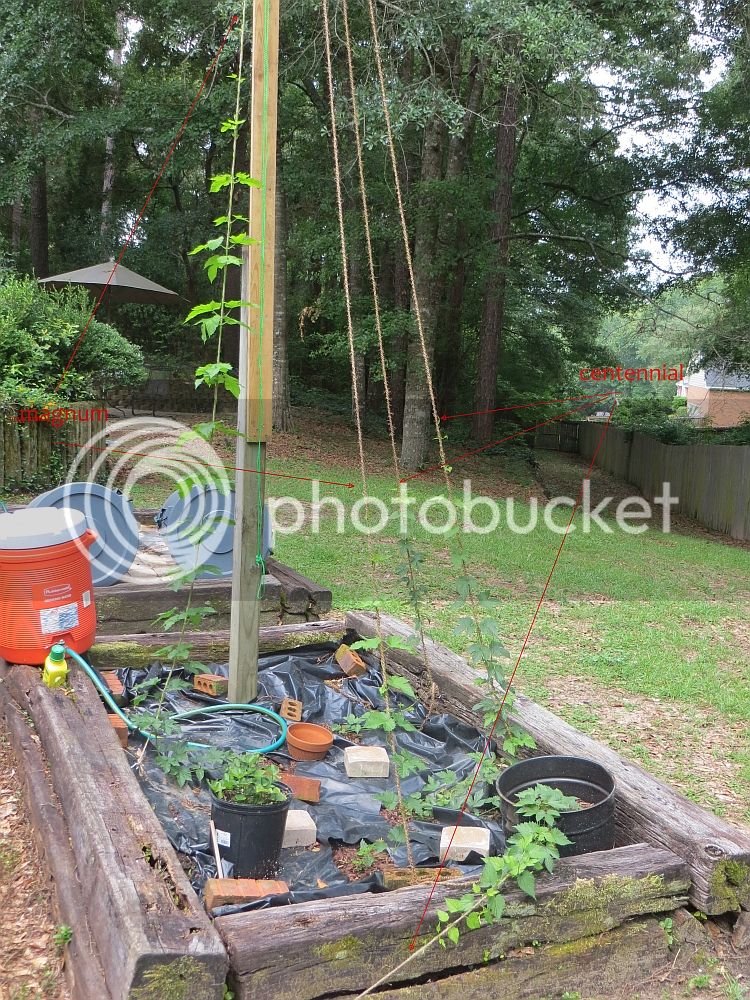- Joined
- Dec 5, 2007
- Messages
- 1,719
- Reaction score
- 759
I built a 15' teepee structure for my first year plants which I planted in March and they are growing like crazy up it now. The magnum's especially are going nuts--they are about 6' tall already and have grown a total of 8' as the ropes they are climbing are 2' away from where I planted them.
So it appears based on their current rate of growth these plants will reach the top of the teepee by next month or soon after. I have the ability to raise and lower the tops of the ropes if necessary. I was wondering if cutting the tips of the plants off when they reach the top of the teepee is a good idea rather than possibly having them grow over onto the other ropes?
So it appears based on their current rate of growth these plants will reach the top of the teepee by next month or soon after. I have the ability to raise and lower the tops of the ropes if necessary. I was wondering if cutting the tips of the plants off when they reach the top of the teepee is a good idea rather than possibly having them grow over onto the other ropes?



